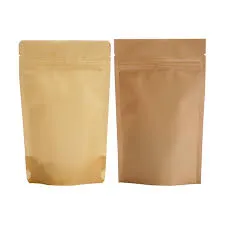- Afrikaans
- Albanian
- Amharic
- Arabic
- Armenian
- Azerbaijani
- Basque
- Belarusian
- Bengali
- Bosnian
- Bulgarian
- Catalan
- Cebuano
- chinese_simplified
- chinese_traditional
- Corsican
- Croatian
- Czech
- Danish
- Dutch
- English
- Esperanto
- Estonian
- Finnish
- French
- Frisian
- Galician
- Georgian
- German
- Greek
- Gujarati
- haitian_creole
- hausa
- hawaiian
- Hebrew
- Hindi
- Miao
- Hungarian
- Icelandic
- igbo
- Indonesian
- irish
- Italian
- Japanese
- Javanese
- Kannada
- kazakh
- Khmer
- Rwandese
- Korean
- Kurdish
- Kyrgyz
- Lao
- Latin
- Latvian
- Lithuanian
- Luxembourgish
- Macedonian
- Malgashi
- Malay
- Malayalam
- Maltese
- Maori
- Marathi
- Mongolian
- Myanmar
- Nepali
- Norwegian
- Norwegian
- Occitan
- Pashto
- Persian
- Polish
- Portuguese
- Punjabi
- Romanian
- Russian
- Samoan
- scottish-gaelic
- Serbian
- Sesotho
- Shona
- Sindhi
- Sinhala
- Slovak
- Slovenian
- Somali
- Spanish
- Sundanese
- Swahili
- Swedish
- Tagalog
- Tajik
- Tamil
- Tatar
- Telugu
- Thai
- Turkish
- Turkmen
- Ukrainian
- Urdu
- Uighur
- Uzbek
- Vietnamese
- Welsh
- Bantu
- Yiddish
- Yoruba
- Zulu
How Long Can You Store Beef Jerky Safely for Maximum Freshness?
How Long Does Beef Jerky Last? Understanding Shelf Life and Storage Tips
Beef jerky is a popular snack known for its rich flavor, high protein content, and convenience. Whether you’re hiking in nature, road-tripping across the country, or simply looking for a tasty treat at home, it’s essential to understand how long beef jerky lasts and the best practices for storing it.
Shelf Life of Beef Jerky
The shelf life of beef jerky depends on several factors including how it was prepared, packaged, and stored.
1. Commercially Packaged Jerky Most commercially available beef jerky has a shelf life that can range from 1 to 2 years when stored in a cool, dry place. The packaging often includes preservatives that help extend its life. Always check the “best by” or “use by” date on the packaging for guidance; these dates, while not related to safety, indicate when the product is expected to maintain its best quality.
2. Homemade Jerky If you make beef jerky at home, it typically has a shorter shelf life. Properly dried and stored jerky can last for about 1 to 2 months at room temperature. Store-bought vacuum-sealed jerky is similar, but homemade jerky should ideally be refrigerated for longer shelf life, up to 6 months in the fridge or even longer if frozen.
Factors Affecting Shelf Life
Several factors influence how long beef jerky will last
- Moisture Content The less moisture in the jerky, the longer it will last. If jerky is not dried sufficiently, it can develop mold or bacteria, rendering it unsafe to eat. - Storage Conditions Exposure to air, light, and heat can degrade the quality of jerky over time. For best results, store it in a cool, dark place, ideally in an airtight container or vacuum-sealed bag.
- Ingredients The type of seasoning and marinades used can also impact the shelf life. Some ingredients may introduce moisture or spoilage risk.
Proper Storage Tips
beef jerky lasts how long

To maximize the shelf life of your beef jerky, consider the following storage tips
1. Use Airtight Containers Store jerky in vacuum-sealed bags or airtight containers to minimize air exposure. This helps prevent moisture from seeping in and helps retain the jerky's flavorful profile.
2. Keep it Cool Storing jerky in a cool environment can significantly affect its longevity. Avoid leaving it in areas prone to temperature fluctuations, such as a car or near an oven.
3. Freeze for Long-Term Storage If you're not planning to eat your beef jerky soon, consider freezing it. When vacuum-sealed, jerky can remain good for up to a year in the freezer. Just be sure to allow it to thaw completely before consuming for the best texture and flavor.
Signs of Spoilage
Even though jerky has a reasonably long shelf life, it’s crucial to check for signs of spoilage before consumption. Here are a few indicators
- Smell If the jerky has a sour or off smell, it’s best to discard it. - Texture Jerky should be firm but not rock hard. If it feels excessively soft or moist, it might be unsafely treated. - Color Changes While color variations are normal, an unusual darkening or spotting could indicate spoilage.
- Mold Any presence of mold is a clear sign that the jerky has gone bad and should be thrown away immediately.
Conclusion
Beef jerky can be a nutritious and convenient snack option, but understanding its shelf life and how to store it properly is essential to enjoy it at its best. By keeping it in a cool, dry place, using airtight storage, and checking for signs of spoilage, you can ensure that your beef jerky remains delicious and safe to eat for months to come. Whether purchased or homemade, beef jerky offers ample enjoyment, provided you take the right steps to store it.













